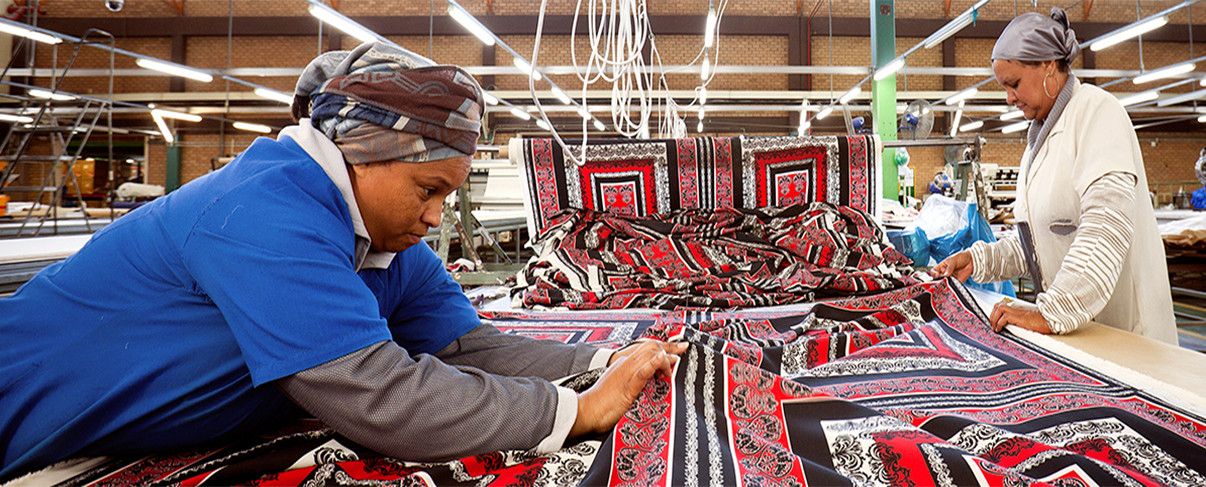OECD gold standard on supply chain due diligence
Posted by Stuart Bell

The recently-published OECD Due Diligence Guidance for Responsible Supply Chains in the Garment and Footwear Sector which runs to 186 pages (and that’s without any pictures or graphics) adds another hefty tome to an expanding list of guidance documents on implementing the UN Guiding Principles on Business and Human Rights.
Hard-pressed responsible supply chain and human rights managers might well ask if this type of document is useful for addressing their day-to-day dilemmas. Perhaps surprisingly the answer is yes. Human rights due diligence is an area where there are often general exhortations (‘map your supply chain’, ‘mitigate your risks’ etc.) which are ill-defined and which businesses struggle to translate into their operational contexts. The OECD’s lengthier and sector-focused document allows for more detailed exploration of these concepts and the inclusion of practical examples. Lengthy it may be, but the Guidance is a useful and generally practical contribution to this emerging field.
The OECD document is well-organised and has many useful and different things to say on aspects of due diligence. In overall structure, it follows the increasingly well-understood steps set out in the UNGPs in terms of: developing policy and embedding in the business, identifying and mitigating risks, tracking and monitoring performance, communicating actions and co-operating for remediation (e.g. through grievance mechanisms). However, within these standard sections there is a lot of helpful explanation and detail, and it is certainly a plus that it has a sectoral focus. For example, it delves into approaches to sub-contracting, with ideas that demonstrate a better understanding of the realities of the garment and footwear sector than other, more generic documents.
The Guidance makes the important point that due diligence will look different for businesses of varying sizes and with different business models. The complexity of products will in turn affect the complexity of supply chains and the effort required to understand risk. Due diligence is not a one size fits all process. In a similar vein, it discusses how risk is not simply affected by sector and country but also by the way a company does business in terms of such factors as the scale of its supply base, volatility and churn within suppliers, and the directness of their buying relationships. Of course, these sorts of factors also affect leverage and ability to mitigate, but they also contribute to the risk. The Guidance is similarly strong in terms of its emphasis on evaluating the complete supply chain, beyond tiers one and two, as far as raw material producers.
More art than science?
One area where more help could have been provided is on methods of prioritising countries or suppliers for more detailed due diligence based on higher risks. Priorisation is essential as too often, in our experience, risk assessments simply show up multiple countries and product supply chains as ‘red’ without enabling companies to differentiate between risks. However, other than setting out that prioritisation should be based on severity and likelihood, there is little guidance on what that actually means. In our professional practice, we employ various quantitative tools to assist with categorising and prioritising risks, but in a world of imperfect knowledge, essentially concepts such as severity and likelihood rely on informed judgements. It would be helpful to acknowledge that risk assessment is as much an art as it is a science and to provide some examples for effective building blocks upon which such judgements can be formed.
A second area where more nuance would have been welcome is the Guidance’s reliance on site assessments as the next step after desk-based risk assessment. We would agree that a specialised site assessment needs to be done when a particular risks has been arisen (e.g. a localised risk of forced labour), but we would question whether investigation-based site visits are necessary when a risk is endemic. Many risks are sector and country-wide and the question is how best to mitigate rather than how best to verify such risk. For example, if long working hours have been identified as a key risk during desk research, rather than investigating site-by-site whether this is the case, it can be more resource-efficient to simply assume the risk is present and to spend time with suppliers working through how the problem can be addressed.
Almost half of the Guidance document comprises ‘modules’ on particular risks encompassing social issues such as forced labour, trade unions and wages, and environmental risks such as hazardous chemical and greenhouse gas emissions. These offer more detailed insights into the nature of particular risks, and how they can begin to be addressed. Some of this can feel rather generalised as strategies such as engagement with trade unions or assessing living wages often depend on national circumstances, but they also include valuable suggestions.
The OECD’s guidance is not going to win any prizes for design, and its heft could be off-putting, but it is well worth delving into for ideas on how to translate theoretical due diligence concepts into practical guidance.